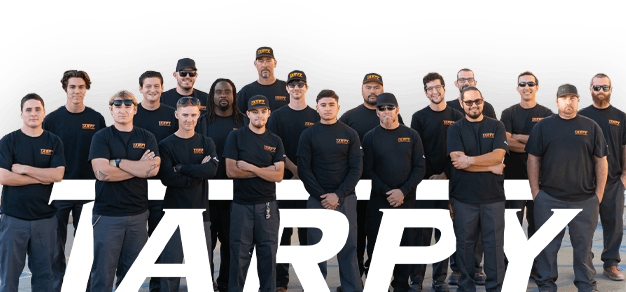Your water heater is obviously an essential part of your home’s plumbing system. After all, without hot water, you wouldn’t be able to wash your dishes, shower, or do laundry. Having a steady supply of hot water is important, but the question most people have is how hot their home’s water should be. To help you out, here is everything you need to know about water heater temperatures and how to adjust the settings on your unit.
Recommended Temperature Settings
OSHA recommends that you set your water heaters at 140 degrees Fahrenheit for safety reasons. However, the Department of Energy recommends that your water heater stays at 120 degrees in order to save energy and reduce the risk of scalding. The ideal temperature is usually somewhere between these two numbers, but it depends on your specific needs.
If you have small children in the house, you probably want to keep the water temperature at 120 degrees. That will prevent your kids from being accidentally scalded. However, you should never set the temperature to anything below this. If the temperature is below 120 degrees, it can allow harmful bacteria to grow inside the tank. In the worst-case scenario, legionella can form, which is the bacteria that causes Legionnaire’s disease.
Most people leave their water heater set at 140 degrees as this is more effective for cleaning and sanitizing. Most water heaters can go up to 160 degrees, but really anything above 140 is unnecessary. In addition, the higher you have the heat set, the more frequently the burner or heating element will come on. This increases your energy costs, and it can also cause the unit to break down and fail more quickly.
If you have a larger home, it can take an extremely long time for hot water to start flowing from the tap. Some individuals feel that they can decrease this wait time simply by turning up the water temperature, but it doesn’t work this way. Instead, you may want to consider having a hot water recirculating system installed. This type of system is a loop that connects the water heater to your plumbing system and then back to the water heater. A pump constantly circulates hot water through the loop, ensuring that you will always have hot water within a few seconds of turning on the faucet.
Testing Your Water Temperature
Water heaters don’t have a built-in temperature gauge. This means there is no way for you to immediately tell how hot your water actually is. As your unit ages, it may start to fail and have issues properly regulating the temperature. If you suspect your water is hotter or colder than it should be, you may want to measure it to see what the actual temperature of your hot water is. This is also useful if you’re not sure what the symbols or numbers on the temperature control mean.
To do this, refrain from using any hot water for at least a full hour. This will ensure the hot water tank is full and the water is thoroughly heated. Next, turn the hot water tap on and let it run for a minute or two to make sure it is as hot as it gets. You can then fill up a glass and use an instant-read kitchen thermostat to measure the temperature.
If the temperature isn’t the same as what you have the unit set to, you will want to have it inspected by a professional plumber since this indicates that there’s a problem. This issue most commonly occurs because the heating element is failing and needs to be replaced.
Gas water heaters use a heat exchanger that absorbs heat from the burner and transfers it to the water. Electric water heaters have a heating element in both the bottom and top of the tank. In either case, if the heating element isn’t working properly, your water won’t be as hot as it should. If the heating element fails altogether, you won’t have any hot water.
The temperature control itself can also fail. When this happens, it can potentially cause the water to become too hot. This is because the temperature control can malfunction and signal the unit to start heating even though the water is already at the correct temperature. More commonly, this causes the water to be colder than it should.
Adjusting the Temperature on a Gas Water Heater
Setting the temperature on a gas water heater is as simple as turning the control knob to your desired setting. The only issue is that many units use symbols to mark the different temperature settings instead of numbers. Luckily, most manufacturers use similar symbols.
After the pilot light setting, you will usually see one or two dots followed by a triangle. On other units, you may see labels marked “Low” and “Hot” instead. The dot or “Low” setting is usually around 80 to 90 degrees, so you can completely ignore this since it won’t be hot enough to prevent bacterial growth. The triangle or “Hot” setting should be 120 degrees.
Past the triangle, you will typically see settings marked “A,” “B,” “C,” and “Very Hot.” Each subsequent setting above “Hot” increases the temperature by 10 degrees. That means “A” is 130 degrees, “B” is 140, and so forth. The “Very Hot” setting is typically 160 degrees, and there is no reason to ever set the unit this high.
Some water heaters also have a Vacation setting. When set to Vacation mode, the unit won’t heat at all to prevent energy waste. However, this setting ensures that the pilot light stays lit so that you won’t have to relight it when you get back home and go to turn the temperature back up.
How to Adjust the Temperature on an Electric Water Heater
Adjusting the temperature on an electric water heater is usually slightly more involved. On most models, you will typically need to remove a couple of screws so you can take the cover off the access panel. Before doing this, you should shut off the circuit breaker that controls the unit to prevent accidental electrocution. Once the access panel is off, there may also be insulation covering the thermostat control.
To adjust the temperature, use a flat screwdriver to turn the control to the desired temperature. You can then put the insulation back in, reattach the access panel door and turn the electricity back on to the unit.
Changing the Temperature on a Tankless Water Heater
If you have a tankless water heater, you’re in luck. This is by far the easiest type to adjust. Instead of knobs or other controls, tankless water heaters have an LED control panel that is similar to your HVAC system’s thermostat. To adjust the temperature, simply press the up or down arrows until the panel shows the desired temperature. It’s as simple as that.
San Diego’s Water Heater Experts
If your water heater isn’t heating properly, making loud noises, or experiencing any other problems, Tarpy Plumbing, Heating & Air is here to help. We repair and service all makes and models of traditional and tankless water heaters. Our licensed plumbers also specialize in tankless and traditional water heater installation. We are a local, family-owned company, and our team of experts has years of experience performing all types of plumbing repairs and installations. To schedule an appointment to have your water heater serviced, give us a call today.


 SPECIALISTS
SPECIALISTS

